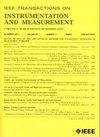Object Detection in Remote Sensing Imagery Based on Prototype Learning Network With Proposal Relation
IF 5.6
2区 工程技术
Q1 ENGINEERING, ELECTRICAL & ELECTRONIC
IEEE Transactions on Instrumentation and Measurement
Pub Date : 2024-09-16
DOI:10.1109/TIM.2024.3451572
引用次数: 0
Abstract
Deep learning object detection algorithms, due to their powerful feature learning capabilities, can effectively improve the accuracy of target detection in remote sensing images. However, remote sensing image target detection faces challenges such as dense arrangement of small targets and complex backgrounds. Addressing the above issues, how to enhance the receptive field while effectively depicting the structural relationships between proposals will be beneficial for detecting small targets in remote sensing images with complex backgrounds. Motivated by this, a prototype learning network with proposal relation, called PLNet-PR, is proposed for remote sensing object detection, while enhancing receptive fields. The shift operation is inserted into the inception module and spatial graph convolution layer, constructing sparse shift selective convolution (S3Conv) based on spatial-channel selective attention mechanism, and graph-guided proposal-relation learning module (GPRLM), for enhancing the characterization of small targets and acquiring powerful proposal-level feature relations of remote sensing targets. Furthermore, a category prototype repository (CPRep) with a class-wise semantic attention (CWSA) block is proposed for the improved proposal generation between different remote sensing object categories. Our extensive experiments validate the effectiveness of PLNet-PR which outperforms other related deep learning methods. Codes are available:基于原型学习网络与提案关系的遥感图像中的物体检测
深度学习物体检测算法具有强大的特征学习能力,可以有效提高遥感图像中目标检测的准确性。然而,遥感图像目标检测面临着小目标密集排列、背景复杂等挑战。针对上述问题,如何在增强感受野的同时有效地描述提案之间的结构关系,将有利于在复杂背景的遥感图像中检测小目标。受此启发,我们提出了一种具有提议关系的原型学习网络,称为 PLNet-PR,用于遥感目标检测,同时增强感受野。在接收模块和空间图卷积层中插入了移位操作,构建了基于空间通道选择性注意机制的稀疏移位选择性卷积(S3Conv)和图引导的提议关系学习模块(GPRLM),用于增强小目标的特征描述,并获取遥感目标的强大提议级特征关系。此外,我们还提出了一个带有分类语义注意(CWSA)模块的类别原型库(CPRep),用于改进不同遥感目标类别之间的提案生成。我们的大量实验验证了 PLNet-PR 的有效性,它优于其他相关的深度学习方法。代码见:https://github.com/RSIP-NJUPT/PLNet-PR。
本文章由计算机程序翻译,如有差异,请以英文原文为准。
求助全文
约1分钟内获得全文
求助全文
来源期刊

IEEE Transactions on Instrumentation and Measurement
工程技术-工程:电子与电气
CiteScore
9.00
自引率
23.20%
发文量
1294
审稿时长
3.9 months
期刊介绍:
Papers are sought that address innovative solutions to the development and use of electrical and electronic instruments and equipment to measure, monitor and/or record physical phenomena for the purpose of advancing measurement science, methods, functionality and applications. The scope of these papers may encompass: (1) theory, methodology, and practice of measurement; (2) design, development and evaluation of instrumentation and measurement systems and components used in generating, acquiring, conditioning and processing signals; (3) analysis, representation, display, and preservation of the information obtained from a set of measurements; and (4) scientific and technical support to establishment and maintenance of technical standards in the field of Instrumentation and Measurement.
 求助内容:
求助内容: 应助结果提醒方式:
应助结果提醒方式:


